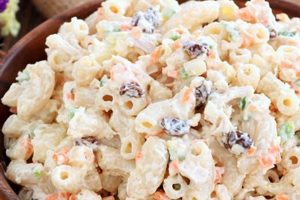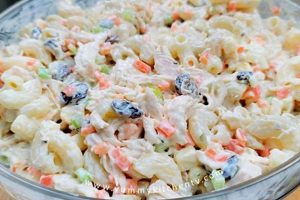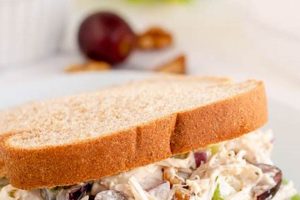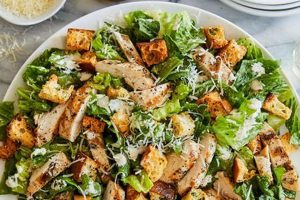A dish combining cooked chicken, typically shredded or diced, with mayonnaise, grapes, and often other ingredients such as celery, onion, nuts, or seasonings, constitutes a classic combination. Variations can include different types of grapes, additions like dried cranberries or apples, and alternative dressings like yogurt or sour cream.
This blend of protein, fruit, and creamy dressing offers a refreshing and flavorful meal option, suitable for picnics, lunches, or light dinners. The sweetness of the grapes complements the savory chicken and creates a textural contrast that enhances the eating experience. Historically, similar combinations of meat or poultry with fruits and nuts have appeared in various cuisines for centuries, reflecting the availability of seasonal ingredients and the desire for balanced flavors. This particular combination likely gained popularity in the mid-20th century with the rise of convenience foods and the increased availability of mayonnaise.
Further exploration of this culinary creation could include examining specific ingredient choices, preparation methods, nutritional information, and variations suitable for different dietary needs.
Tips for a Superior Chicken Salad with Grapes
Elevating this classic dish requires attention to detail and an understanding of the interplay of flavors and textures. The following tips offer guidance for achieving optimal results.
Tip 1: Chicken Selection: Using high-quality cooked chicken, whether roasted, poached, or grilled, contributes significantly to the overall flavor. Avoid pre-cooked or processed chicken for best results.
Tip 2: Grape Variety: Seedless red or green grapes offer a pleasant sweetness and pop. Consider using a mix of both for visual appeal and flavor complexity. Halving larger grapes ensures even distribution and easier eating.
Tip 3: Mayonnaise Matters: Full-fat mayonnaise provides the classic creamy texture and richness. Experimenting with flavored mayonnaises or adding a touch of Greek yogurt or sour cream can add depth.
Tip 4: Enhancing Ingredients: Finely diced celery and red onion add crispness and subtle sharpness. Toasted nuts, such as pecans or walnuts, provide textural contrast and complementary flavor.
Tip 5: Seasoning Strategically: Freshly ground black pepper, a pinch of salt, and a dash of celery seed enhance the overall flavor profile without overpowering the delicate balance.
Tip 6: Chilling for Flavor Development: Allowing the salad to chill for at least 30 minutes, or preferably longer, allows the flavors to meld and intensify.
Tip 7: Serving Suggestions: Serve the salad on bread, croissants, lettuce cups, or crackers. Garnish with fresh herbs, such as dill or parsley, for added visual appeal and flavor.
By following these tips, one can create a chicken salad with grapes that is both flavorful and texturally appealing, offering a satisfying and refreshing culinary experience.
These guidelines pave the way for creating a truly exceptional dish.
1. High-quality Chicken
Chicken quality significantly impacts the overall success of a chicken salad with grapes recipe. The chicken provides the foundational flavor and texture, influencing the final dish’s palatability and enjoyment. Selecting and preparing the chicken thoughtfully elevates this seemingly simple salad to a culinary delight.
- Flavor Profile
High-quality chicken possesses a richer, more pronounced flavor than its processed counterparts. This inherent flavor enhances the salad, creating a more complex and satisfying taste experience. Freshly roasted or poached chicken offers a clean, savory base that allows the other ingredients, such as grapes and mayonnaise, to shine without being overshadowed.
- Texture and Moisture
Tender, moist chicken contributes to a pleasant mouthfeel, contrasting with the crispness of celery and the sweetness of grapes. Dry, stringy chicken detracts from the overall experience. Proper cooking methods, such as poaching or gentle roasting, ensure optimal moisture retention and tenderness.
- Overall Quality and Freshness
Using fresh, high-quality chicken ensures the salad’s safety and contributes to its overall appeal. Avoiding pre-cooked or processed chicken minimizes the risk of off-flavors or undesirable textures, resulting in a more palatable and enjoyable dish.
- Visual Appeal
While flavor and texture are paramount, the visual appeal of the chicken also plays a role. Well-prepared, high-quality chicken presents an attractive appearance in the salad, enhancing its overall presentation. Uniformly sized pieces and a pleasing color contribute to a more visually appealing dish.
The choice of chicken directly influences the final outcome of a chicken salad with grapes recipe. Prioritizing quality through careful selection and proper preparation ensures a more flavorful, texturally satisfying, and visually appealing salad. This attention to the base ingredient elevates the entire dish, demonstrating that even simple recipes benefit from a focus on quality ingredients.
2. Seedless Grapes
Seedless grapes play a crucial role in the “chicken salad with grapes recipe,” contributing significantly to both the textural and flavor profile. Their absence of seeds offers a seamless, enjoyable eating experience, eliminating the interruption and potential bitterness that seeds can introduce. This characteristic makes them particularly well-suited for this type of salad, where ease of consumption and a smooth texture are highly valued. Furthermore, the sweetness of seedless grapes, whether red or green varieties, complements the savory notes of the chicken and the creamy richness of the mayonnaise, creating a balanced and harmonious flavor combination. Imagine biting into a chicken salad sandwich and encountering a hard grape seed; the experience would be jarring and detract from the overall enjoyment. Seedless grapes eliminate this possibility, ensuring a consistently pleasant culinary experience.
The size and texture of seedless grapes also contribute positively to the recipe. Their relatively small size allows for easy incorporation into the salad, ensuring even distribution throughout. Additionally, their firm yet yielding texture offers a pleasing contrast to the softer textures of the chicken and mayonnaise, adding a dimension of interest to each bite. Consider a variation using large, seeded grapes; the salad would become cumbersome to eat, requiring extra effort to remove the seeds. Seedless grapes streamline the eating process, making the salad more convenient and enjoyable, particularly in casual settings like picnics or quick lunches. This practical advantage underscores their importance in the recipe.
In summary, the selection of seedless grapes in a chicken salad with grapes recipe is not merely a matter of convenience but a deliberate choice that enhances both the sensory experience and the practical enjoyment of the dish. Their absence of seeds, combined with their size, texture, and sweetness, contributes significantly to the overall success of the recipe, demonstrating the thoughtful consideration behind this seemingly simple ingredient choice. Successfully incorporating this element contributes to a more refined and satisfying culinary experience, highlighting the impact of careful ingredient selection on even the simplest of dishes.
3. Creamy Mayonnaise
Mayonnaise serves as a crucial binding agent and flavor enhancer in chicken salad with grapes, contributing significantly to the overall texture, taste, and enjoyment of the dish. Its creamy texture provides a smooth, luxurious mouthfeel that complements the other ingredients, while its tangy flavor balances the sweetness of the grapes and the savory notes of the chicken. The quality and type of mayonnaise selected directly impact the final product, influencing both its consistency and its overall flavor profile.
- Texture and Consistency
Creamy mayonnaise creates the desired smooth, cohesive texture that binds the chicken, grapes, and other ingredients together. A thinner, less viscous mayonnaise would result in a watery, less appealing salad, while an overly thick mayonnaise could make the salad dense and heavy. The ideal mayonnaise possesses a smooth, spreadable consistency that coats the ingredients evenly without overpowering them.
- Flavor Enhancement
Mayonnaise contributes a subtle tanginess that balances the sweetness of the grapes and enhances the savory flavor of the chicken. This balance is essential for a well-rounded flavor profile. Different types of mayonnaise, such as those flavored with herbs or spices, can further enhance the complexity of the salad’s taste.
- Moisture and Mouthfeel
Mayonnaise adds moisture to the salad, preventing it from becoming dry and crumbly. This moisture contributes to a more pleasant mouthfeel, making the salad easier to chew and swallow. The right amount of mayonnaise ensures a moist, palatable salad without making it excessively greasy or heavy. This delicate balance is key for an optimal culinary experience.
- Overall Palatability
The creaminess of mayonnaise contributes to the overall palatability of the chicken salad, making it more appealing to the senses. This creaminess enhances the enjoyment of the dish, making it a more satisfying and pleasurable eating experience. A well-balanced chicken salad, with the right amount of creamy mayonnaise, offers a harmonious blend of flavors and textures that is both refreshing and satisfying.
The selection and incorporation of creamy mayonnaise represent a critical step in preparing chicken salad with grapes. The right mayonnaise elevates the dish from a simple mixture of ingredients to a cohesive, flavorful, and texturally satisfying culinary creation. Careful consideration of the mayonnaise’s texture, flavor, and overall impact on the salad ensures a more enjoyable and balanced final product. The interplay between the mayonnaise and the other ingredients highlights the importance of each component in achieving a harmonious and delicious result.
4. Crisp Celery
Celery’s role in chicken salad with grapes extends beyond mere filler; it provides crucial textural contrast and subtle flavor enhancement, elevating the dish from simple to sophisticated. Its crispness offers a refreshing counterpoint to the softer textures of chicken and mayonnaise, while its subtle, slightly peppery flavor complements the sweetness of the grapes and savory notes of the chicken. Understanding celery’s contribution requires examining its various facets within the recipe’s context.
- Textural Contrast
Celery’s fibrous stalks offer a satisfying crunch, contrasting with the tender chicken and creamy mayonnaise. This textural diversity prevents the salad from becoming monotonous, creating a more dynamic and enjoyable eating experience. Imagine biting into a uniformly soft salad; the experience would lack the stimulating contrast that celery provides. This crispness elevates the salad’s textural profile, making each bite more engaging.
- Flavor Enhancement
While not overpowering, celery’s subtle, slightly bitter and earthy flavor complements the other ingredients. It adds a layer of complexity to the overall flavor profile, balancing the sweetness of the grapes and enhancing the savory aspects of the chicken. This nuanced flavor contribution prevents the salad from tasting bland or one-dimensional, creating a more balanced and satisfying culinary experience.
- Visual Appeal
Finely diced celery adds visual interest to the salad, its bright green color contrasting with the other ingredients. This visual appeal enhances the overall presentation, making the salad more appetizing. The small, evenly diced pieces also contribute to a more refined aesthetic, further elevating the dish’s visual impact.
- Nutritional Value
Celery contributes dietary fiber and essential vitamins and minerals to the salad, adding nutritional value to the dish. While often overlooked, this nutritional contribution complements the protein from the chicken and the antioxidants from the grapes, creating a more balanced and healthful meal option.
Celery’s contribution to chicken salad with grapes is multifaceted, extending beyond simple textural contrast. Its subtle flavor, visual appeal, and nutritional value work synergistically to create a more balanced, enjoyable, and healthful dish. The careful inclusion of crisp celery demonstrates that even seemingly minor ingredients can significantly impact the overall culinary experience. Its presence elevates the salad from a basic combination of ingredients to a more complex and satisfying culinary creation.
5. Toasted Nuts (Optional)
The addition of toasted nuts, while optional, contributes a significant layer of complexity to chicken salad with grapes. The toasting process intensifies the nuts’ natural oils, creating a richer, more pronounced flavor that complements the other ingredients. This intensified flavor profile enhances the overall sensory experience, adding depth and dimension to the salad. Furthermore, the nuts introduce a textural contrast, their satisfying crunch juxtaposing with the softer textures of the chicken, grapes, and mayonnaise. This interplay of textures creates a more dynamic and engaging mouthfeel, further elevating the dish. Consider, for instance, the addition of toasted pecans; their buttery, slightly sweet flavor harmonizes with the grapes, while their crisp texture provides a welcome counterpoint to the creamy mayonnaise. Similarly, toasted walnuts offer a slightly earthy, more robust flavor that complements the savory chicken, enhancing the overall complexity of the salad.
The choice of nut and the degree of toasting offer opportunities for customization. Pecans, walnuts, and almonds are popular choices, each contributing a unique flavor profile. Lightly toasted nuts retain some of their original texture, while more heavily toasted nuts offer a more intense crunch and a deeper, more caramelized flavor. This flexibility allows for tailoring the salad to individual preferences, creating variations that cater to specific tastes. A salad featuring lightly toasted slivered almonds offers a delicate crunch and a subtle nuttiness, while a salad with heavily toasted chopped walnuts provides a more robust, assertive presence. These nuances allow for a personalized approach, enhancing the culinary experience.
Incorporating toasted nuts demonstrates a thoughtful approach to flavor and texture, elevating the chicken salad with grapes from a simple dish to a more refined culinary creation. While their inclusion remains optional, understanding their potential contribution allows for a more nuanced appreciation of the interplay of ingredients. The careful selection and toasting of nuts demonstrates a commitment to maximizing flavor and texture, ultimately enriching the overall dining experience. This attention to detail, even with optional ingredients, distinguishes a truly exceptional chicken salad.
6. Balanced Seasonings
Balanced seasonings are essential for a successful chicken salad with grapes recipe, elevating it from palatable to exceptional. Seasoning influences the overall flavor profile, enhancing the inherent flavors of the chicken, grapes, and other ingredients without overpowering the delicate balance. Over-seasoning can mask the subtle sweetness of the grapes and the savory notes of the chicken, while under-seasoning results in a bland, uninspired dish. Consider a scenario where an overabundance of salt dominates the flavor profile; the nuanced sweetness of the grapes and the delicate flavor of the chicken become lost, resulting in a less satisfying experience. Conversely, a lack of seasoning leaves the salad tasting flat and uninteresting, failing to engage the palate fully. Achieving a harmonious balance is crucial for maximizing the recipe’s potential.
The interplay of salt, pepper, and other seasonings creates a complex flavor profile that complements the other ingredients. Salt enhances the savory notes of the chicken and balances the sweetness of the grapes, while freshly ground black pepper adds a subtle warmth and complexity. Other seasonings, such as celery seed, onion powder, or a touch of garlic powder, can further enhance the flavor profile, adding depth and dimension. However, restraint is key; the goal is to enhance, not overpower, the existing flavors. Imagine adding a pinch of smoked paprika to the salad; the subtle smokiness adds another layer of flavor, complementing the other ingredients without dominating the taste. This careful consideration of seasonings transforms a simple chicken salad into a more nuanced and sophisticated dish.
A well-seasoned chicken salad with grapes exemplifies the power of balanced flavors. The interplay of sweet, savory, and subtly spiced notes creates a harmonious flavor profile that engages the palate and elevates the overall dining experience. Careful consideration of seasonings, coupled with a restrained approach, ensures that each ingredient contributes to the final product without overpowering the delicate balance. This understanding of seasoning allows for a more nuanced appreciation of the recipe, transforming a simple dish into a culinary delight. Ultimately, balanced seasonings are the key to unlocking the full potential of a chicken salad with grapes recipe.
7. Adequate Chilling Time
Adequate chilling time is a crucial, often overlooked, element in preparing a superior chicken salad with grapes. Chilling allows the flavors of the various ingredients to meld and intensify, resulting in a more cohesive and flavorful final product. This seemingly simple step significantly impacts the overall sensory experience, transforming a basic mixture into a harmonious blend of flavors and textures. Understanding the impact of chilling requires exploring its multifaceted contributions to the final dish.
- Flavor Development
Chilling allows the individual flavors of the chicken, grapes, mayonnaise, and other ingredients to meld together, creating a more complex and nuanced flavor profile. The flavors become more integrated and balanced, resulting in a more harmonious and satisfying taste. This fusion of flavors is particularly noticeable with ingredients like grapes, whose sweetness subtly permeates the other components during chilling.
- Texture Enhancement
Chilling firms the texture of the chicken salad, making it easier to handle and serve. This enhanced texture also contributes to a more pleasant mouthfeel. A well-chilled salad holds its shape better, whether served on bread, crackers, or lettuce cups. This structural integrity enhances the overall presentation and eating experience.
- Temperature and Palatability
Serving the salad chilled enhances its palatability, particularly in warmer weather. The cool temperature offers a refreshing contrast, making the salad more enjoyable to consume. A warm chicken salad can taste heavy and less appealing, especially on a hot day. Chilling elevates the sensory experience, providing a welcome coolness that complements the flavors.
- Food Safety
Chilling is essential for food safety, preventing the growth of harmful bacteria. Maintaining the salad at a safe temperature below 40F (4C) inhibits bacterial proliferation, ensuring the dish remains safe for consumption. This critical aspect of food safety underscores the importance of adequate chilling time.
Adequate chilling time is not merely a matter of preference but a crucial step that significantly influences the flavor, texture, palatability, and safety of chicken salad with grapes. Allowing sufficient time for the flavors to meld and the salad to chill enhances the overall culinary experience, transforming a simple mixture into a well-balanced and refreshing dish. This seemingly minor detail demonstrates that even simple steps can have a profound impact on the final product, highlighting the importance of careful preparation in achieving culinary excellence.
Frequently Asked Questions
This section addresses common inquiries regarding chicken salad with grapes, providing concise and informative responses to clarify potential uncertainties and enhance understanding of this culinary creation.
Question 1: What type of chicken is best suited for this recipe?
Rotisserie chicken offers convenience and enhanced flavor, but any cooked chicken, such as roasted, poached, or grilled, works well. Avoid pre-cooked or processed chicken for optimal results.
Question 2: Can other fruits be substituted for grapes?
While grapes provide a specific sweetness and texture, other fruits like diced apples or dried cranberries can be incorporated for variation, though this alters the classic profile.
Question 3: How long can chicken salad with grapes be stored safely?
Properly stored in an airtight container in the refrigerator, it typically remains safe for consumption for up to 3-4 days. Monitor for any signs of spoilage before consuming.
Question 4: What are some suitable serving suggestions beyond bread or crackers?
Lettuce cups, croissants, or as a filling for bell peppers or tomatoes offer alternative presentation options. It can also be served as a topping for mixed greens.
Question 5: Can the mayonnaise be replaced with a healthier alternative?
Plain Greek yogurt or a combination of yogurt and mayonnaise offer a lighter alternative, though this alters the traditional flavor and texture.
Question 6: How can one prevent the salad from becoming watery?
Ensuring the chicken is not overly moist before incorporating it into the salad, as well as using a thicker mayonnaise or adding a small amount of finely diced celery, can help absorb excess moisture.
Addressing these frequently asked questions aims to provide a comprehensive understanding of various aspects related to creating and enjoying chicken salad with grapes. Careful consideration of these points enhances one’s ability to prepare a successful and satisfying dish.
This concludes the frequently asked questions section.
Chicken Salad with Grapes Recipe
Exploration of the “chicken salad with grapes recipe” reveals the importance of ingredient selection, preparation techniques, and the interplay of flavors and textures. High-quality chicken, fresh seedless grapes, and creamy mayonnaise form the foundation, while crisp celery, optional toasted nuts, and balanced seasonings add depth and complexity. Adequate chilling time allows flavors to meld, enhancing the final product. Addressing common inquiries clarifies optimal approaches and potential variations.
The enduring appeal of this seemingly simple dish lies in its harmonious balance of flavors and textures. Careful consideration of each component elevates the “chicken salad with grapes recipe” from a basic combination of ingredients to a satisfying and refreshing culinary experience. This exploration underscores the potential for culinary artistry, even within seemingly simple recipes, inviting further experimentation and enjoyment.






